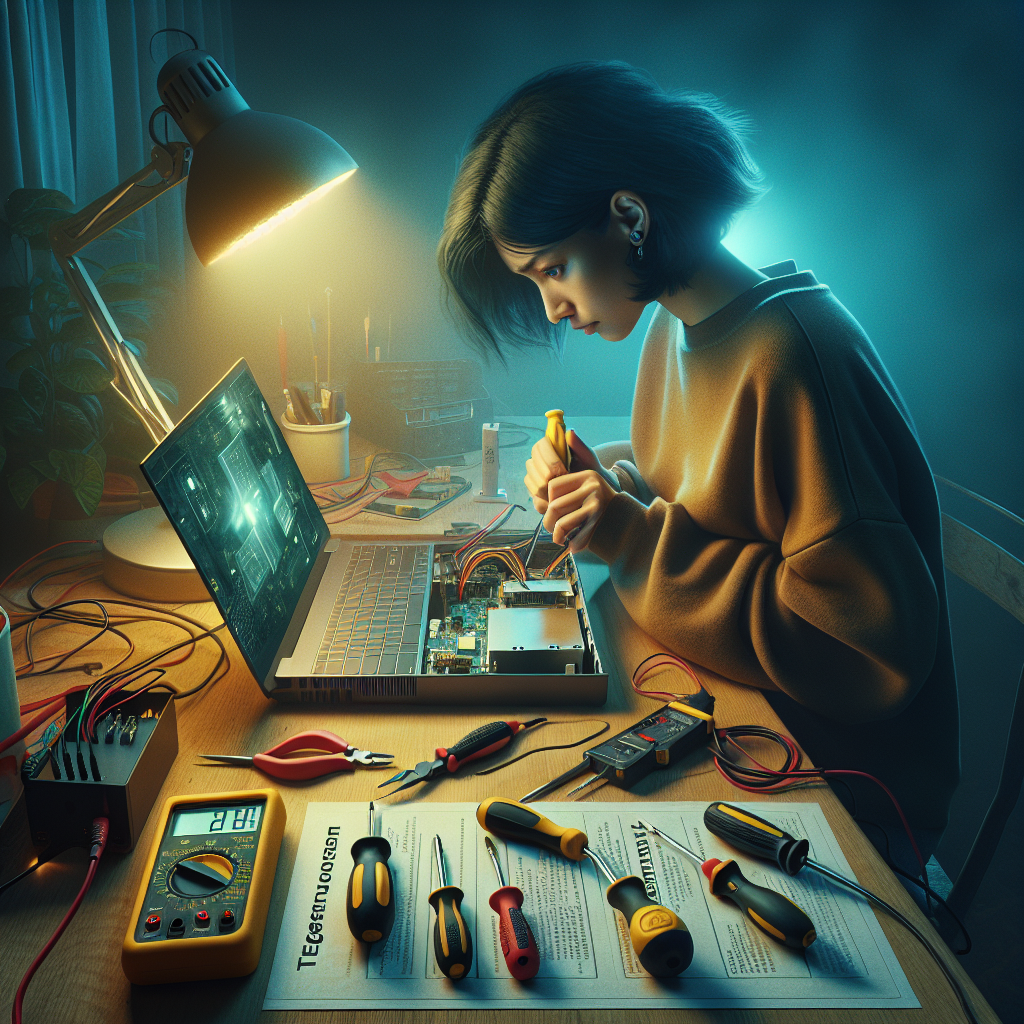DIY Computer Repair can save you a lot of money and is a valuable skill to have.
A malfunctioning computer can feel like a disaster in an age where technology permeates our daily lives. Whether it’s for work, study, or entertainment, computers have become essential tools. Fortunately, many common computer issues can be addressed through DIY repairs. This beginner’s guide aims to equip you with the foundational knowledge to troubleshoot and fix common computer problems.
Understanding Your Computer
Before diving into repairs, it’s essential to understand the basic components of a computer. A standard PC generally consists of:
-
- Central Processing Unit (CPU): The computer’s brain, responsible for executing commands.
-
- Random Access Memory (RAM): Temporary storage for actively used or processed data.
-
- Hard Disk Drive (HDD) or Solid State Drive (SSD): These store your operating system, applications, and files.
-
- Motherboard: The main circuit board that connects all components.
-
- Power Supply Unit (PSU): Provides power to the computer.
-
- Graphics Card: Renders images to your display; necessary for gaming and graphic-intensive tasks.
Understanding these components helps you identify where issues may arise.
Common Issues and Basic Repairs
Computer Won’t Start
If your computer doesn’t power on at all:
-
- Check the power supply: Ensure the power cable is plugged in correctly and the outlet is working.
-
- Inspect the power button and connections: A loose connection can prevent the computer from powering.
-
- Test with minimal hardware: Disconnect all extra devices and components. Then, try starting with the basics: the CPU, one stick of RAM, and integrated graphics. If it starts, reconnect components individually to identify the faulty part.
Overheating
Overheating can lead to system crashes or hardware failure:
-
- Check the fans: Ensure that the fans are working correctly and aren’t obstructed by dust.
-
- Clean your computer: Dust accumulation can obstruct airflow. Use compressed air to clean the vents and fans.
-
- Reapply thermal paste: If your CPU is getting too hot, clean off the old thermal paste and apply a new layer.
Slow Performance
A slow computer can hinder productivity:
-
- Disk Cleanup: Use built-in tools to delete temporary files and uninstall unnecessary programs.
-
- Defrag your Hard Drive: Running disk defragmentation can enhance performance if you have an HDD. (This doesn’t apply to SSDs.)
-
- Check Task Manager: Identify resource-hungry programs and close or uninstall them if unnecessary.
Blue Screen of Death (BSOD)
The infamous BSOD can seem alarming:
-
- Note the error message: Take a picture of the error code, which may give clues about what’s wrong.
-
- Boot in Safe Mode: This allows you to troubleshoot without third-party applications taking control.
-
- Update Drivers: Outdated or corrupted drivers can cause BSODs. Updating them in the device manager can often help.
Software Issues
Typically, issues arise from glitches or compatibility problems:
-
- Reinstall problematic programs: If a specific application is causing issues, uninstalling and reinstalling it can help.
-
- Run Antivirus scans: Malicious software can hinder performance and cause crashes. Running a full antivirus scan can detect and remove threats.
-
- Operating System Repair: As a last resort, consider reinstalling your OS. Always back up your data first.
No Internet Connection
A common issue that can halt productivity:
-
- Check physical connections: Ensure that cables are plugged in correctly.
-
- Restart your router: Sometimes, the problem lies beyond your computer.
-
- Network Troubleshooter: Use the built-in functionality in your operating system to diagnose and fix network problems.
Essential Tools for DIY Computer Repair
Having the right tools can make your repair experience smoother. Here’s a list of essential tools:
-
- Screwdriver Set: A precision screwdriver set, especially with Phillips and flathead options.
-
- Anti-static Wrist Strap: To prevent static electricity from damaging components.
-
- Compressed Air Canister: This is used to clean out dust.
-
- Thermal Paste: Necessary if you’re working with CPUs.
-
- USB Flash Drive: This is for backing up or creating bootable recovery media.
Safety Precautions
-
- Power Off and Unplug: Always turn off your computer and unplug it before starting any repair.
-
- Ground Yourself: Use an anti-static strap or frequently touch a grounded metal object to prevent static discharge.
-
- Document Your Work: Take photos or note how components are connected before disassembly for easier reconnection.
When to Seek Professional Help
While many issues are solvable through DIY repair, some situations may require professional help:
-
- Hardware damage from spills or physical trauma.
-
- Continuous BSODs despite troubleshooting.
-
- Confusing error messages that you don’t understand.
FAQs
Q1: How do I know if my power supply is failing?
A: Signs can include unusual noises, burning smells, or a computer intermittently shuts down. Testing a multimeter or swapping with a known-good power supply can help diagnose this.
Q2: Can I upgrade my computer, and how?
A: Yes, you can usually upgrade components like RAM, storage (HDD/SSD), and graphics cards. Always refer to your motherboard’s manual to check compatibility.
Q3: What’s the best way to prevent overheating?
A: Clean dust from your computer regularly, ensure proper ventilation and consider using software to monitor temperatures.
Q4: How often should I perform maintenance on my computer?
A: Doing a thorough cleanup every 3 to 6 months is a good idea. However, you should update the software and check for viruses more often.
Q5: Is it better to fix or buy a new computer?
A: If the repairs are under 50% of the cost of a new computer, it might be worth fixing. Consider upgrading if severe hardware components need replacing or the laptop is old.
Learning about these possible problems and solutions can save time, money, and frustration. It will also help you understand your computer better. With patience and practice, you’ll soon become more confident in addressing common computer problems. Happy repairing!


